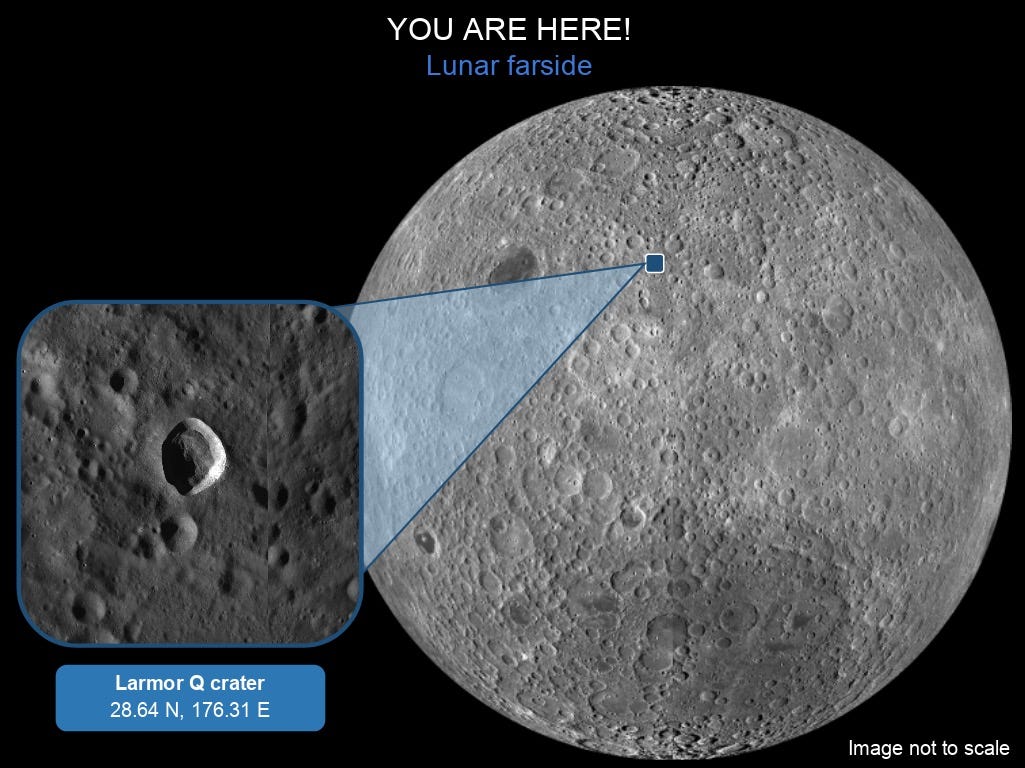A wildly irregular crater on the Moon
The slumped walls of Larmor Q crater.
Seen here is the young, irregular crater Larmor Q, adorned with a slumped wall and layered melted rock.

Unlike most craters, Larmor Q isn't exactly circular, stretching 4 kilometers wider north-south than in does east-west. The massive slumped material seen on the right in the image is believed to have pushed the crater wall further out, thereby making it non-circular. What caused the slumped wall though?
An asteroid or comet smashing onto the lunar surface can be powerful enough to displace the underlying crust. Massive displacement of rocks occur post-impact as things are still hot, energetic and thus moving around. A slumped wall like that of Larmor Q is a result of such a displacement and is seen in this stage due to its geologically young age.
A powerful impact also melts the underlying material, and the melted material is displaced in and around the crater. Such an impact melt is seen clearly in the spectacular layers of melted rock in the left of the featured image. The melt seems to have been pushed to the left by the slumping walls on the right, representing an energetic dynamic. So what does a slumped wall and layered impact melt have in store for a lunar landing mission?
The shape and volume of the impact melt tell us about the crater age, the impactor’s speed and angle, and how the melt moved around post-impact. Determining the age of such young craters via a future sample return mission is crucial to refining ages of other lunar features and thus lunar chronology, that is tied to how events unfolded in the solar system past!

